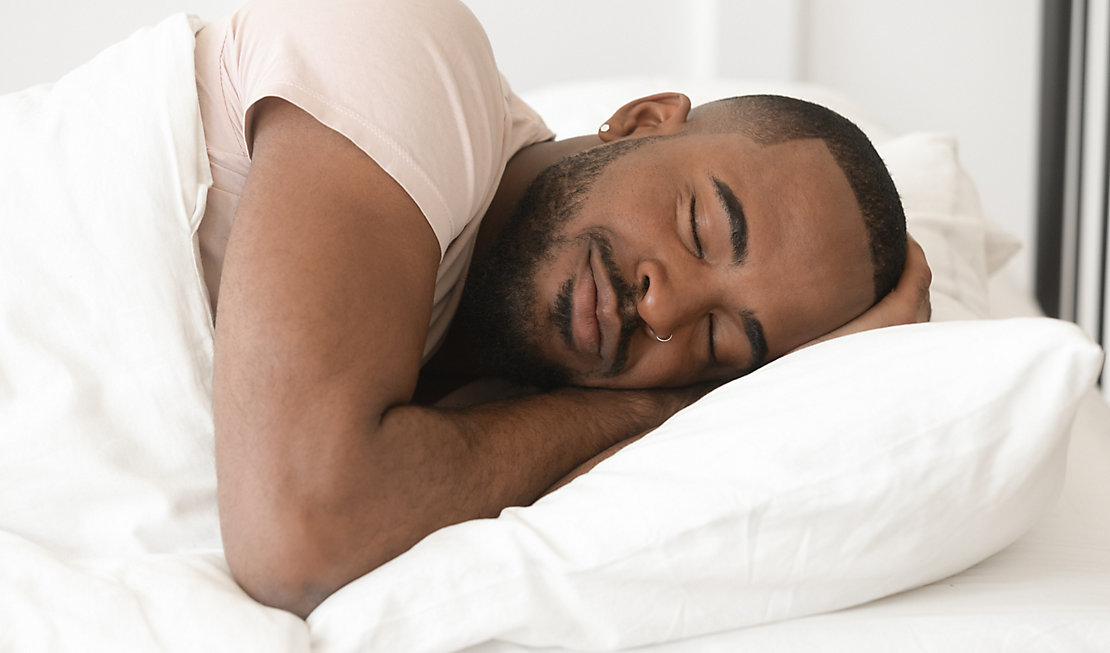Morning comes, the alarm rings, and you hit the snooze button hoping for a few more precious Zzz’s. Maybe you hit the snooze button a second time. And no worries about being late because you planned for the added time. Do those extra Zzz’s really provide additional quality sleep? There is a downside to the snooze button.

But there is more to sleep than the quantity, or number of hours, you get. Sleep quality is equally, if not more important. Sleep quality – how well you sleep – is defined as one’s satisfaction of the sleep experience, including sleep initiation, maintenance and quantity, and feeling refreshed upon wakening.
Do you really feel refreshed after hitting the snooze button one or more times? There is a downside to the snooze button. That is because sleep is not uniform and hitting the snooze button may put you in a non-restorative state of sleep. High-quality rest requires multiple rounds of the sleep cycle – composed of four different sleep stages – during the night. Each stage plays a different role in allowing the body and mind to restore and repair.
Typically, a person goes through four to six sleep cycles through the night, the first of which is the shortest, from 70-100 minutes, while later cycles range from 90-120 minutes. How much time spent in each sleep stage also changes through the night. The four sleep stages include one for rapid eye movement (REM) and three that are non-REM (NREM) sleep, each based on distinct patterns of brain activity. 1-3
NREM sleep is composed of the first three stages.
- Stage 1 consists of the initial five minutes during which a person dozes off, where you may experience twitches as your body and brain activities begin to slow. It is during this stage that it is easiest to wake someone.
- A person typically spends half their sleep time in stage 2, during which body temperature drops, muscles relax, breathing, brain activity and heart rate slow. Eye movement stops and brain waves show a new pattern. During the initial cycle, stage 2 lasts 10-25 minutes and increases during the night.
- Stage 3 is known as deep sleep, during which it is difficult to wake someone. The body relaxes further and breathing, brain activity and heart rate slow down even further. Brain activity is characterized by delta waves, and stage 3 is therefore also known as delta- or slow-wave sleep (SWS). Stage 3 is critical to restorative sleep, allowing for recovery and growth, also for bolstering the immune system and other key processes. Deep sleep also contributes to cognitive function, for example insightful thinking, creativity and memory. Most of the first half of the night is spent in deep sleep. During early sleep cycles, stage 3 typically lasts 20-40 minutes and gets shorter through the night, replaced by REM sleep.

The different sleep stages allow the brain and body to recuperate and develop. Deep and REM sleep are extremely important for cognitive restoration and development, and not getting enough of both stages may have impact on thinking, emotions, and physical health.
Now back to the downside of the snooze button. When your alarm goes off and you hit the snooze button, the sleep you reenter is a lighter stage. Using the snooze button repeatedly may cause you to lose quite a bit of sound, restorative sleep, and doing so on a regular basis may throw off your internal clock. The more you snooze, the more confused your body is – wasn’t it time to get up? – resulting in a groggy feeling. In addition, repeatedly hitting the snooze button takes you out of a routine and requires decision-making – do I or don’t I get up?
Quality and quantity of sleep are both important to allow the body to cycle through the four stages of sleep multiple times through the night. To get the restorative sleep your body needs, it is important to make sleep a priority and follow good sleep hygiene. Take a holistic approach with a consistent schedule, maintaining a nighttime routine and an optimized bedroom environment. Be active and enjoy the outdoors, especially sunlight. Eat a healthy diet and not too late at night. Use natural sleep aids such as melatonin, calming teas and scents as needed. Rather than plan for multiple awakenings, set the alarm for the latest possible moment as part of a healthy sleep routine and maximize deep, restorative sleep.
Subscribe to our Blog
References
- Patel, A. K., Reddy, V., & Araujo, J. F. (2020, April). Physiology, Sleep Stages. Stat Pearls Publishing. Retrieved from https://www.ncbi.nlm.nih.gov/books/NBK526132/
- Division of Sleep Medicine at Harvard Medical School. (2007, December 18). Natural Patterns of Sleep. Retrieved October 5, 2020, from http://healthysleep.med.harvard.edu/healthy/science/what/sleep-patterns-rem-nrem
- National Sleep Foundation. How Sleep Works https://www.sleepfoundation.org/how-sleep-works
These statements have not been evaluated by the Food and Drug Administration. This product is not intended to diagnose, treat, cure, or prevent any disease.
Please note: This website is not aimed at consumers as the information herein contained does not make reference to finished products.

?$featuredContent2$)

?$featuredContent2$)
